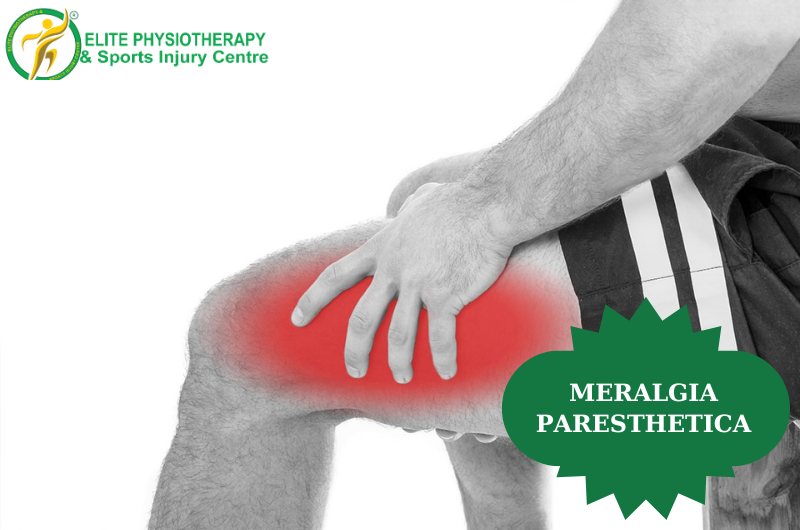
Meralgia Paresthetica
Meralgia paresthetica is a neurological condition characterized by numbness, tingling, and a burning sensation in the outer thigh. It occurs when the lateral femoral cutaneous nerve, which supplies sensation to the skin of the thigh, is compressed. Treatment often involves lifestyle changes and medications to relieve symptoms.
Questions
WHAT CAUSES MERALGIA PARESTHETICA?
The condition is primarily caused by compression of the lateral femoral cutaneous nerve. Common causes include tight clothing, obesity, pregnancy, or any activity that puts pressure on the nerve, like wearing a heavy belt or tool belt.
WHO IS AT RISK FOR DEVELOPING MERALGIA PARESTHETICA?
Individuals who are obese, pregnant, or those who frequently engage in activities requiring them to wear tight belts or heavy tools are at higher risk. Diabetes can also increase the risk due to nerve susceptibility.
WHAT ARE THE SYMPTOMS OF MERALGIA PARESTHETICA?
Symptoms include tingling, numbness, and a burning sensation in the outer part of the thigh. In some cases, the sensitivity to touch in the affected area might also be affected, making clothes feel uncomfortable.
HOW IS MERALGIA PARESTHETICA DIAGNOSED?
Diagnosis typically involves a medical history review and physical examination. Tests like nerve conduction studies or an ultrasound might be used to rule out other conditions.
CAN MERALGIA PARESTHETICA BE PREVENTED?
Preventing Meralgia Paresthetica involves managing risk factors: maintaining a healthy weight, avoiding activities that involve prolonged pressure on the thighs, and wearing loose-fitting clothes.
WHAT IS THE PROGNOSIS FOR SOMEONE WITH MERALGIA PARESTHETICA?
The prognosis is generally good, especially with early intervention. Most people respond well to physiotherapy treatment methods, and the condition often resolves without the need for surgery.
